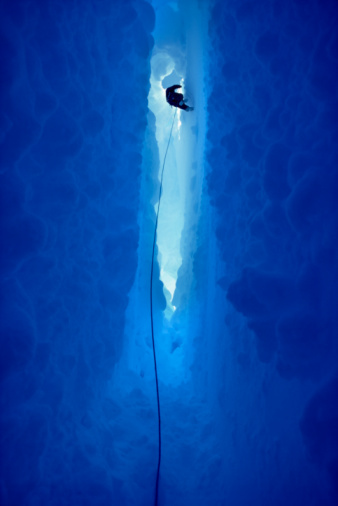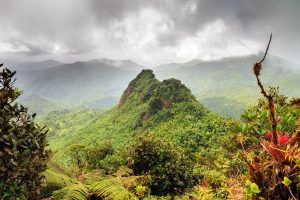The thrill of dropping into a glacial crevasse is a daredevil experience any climbing or mountain enthusiast should experience at least once in his or her life. Back when I was an undergrad, I unintentionally went through a type of “controlled” fall into a glacial crevasse — and oddly enough, I’m grateful for that fall, which did me no bodily harm. Never had I seen ice so blue, or so beautiful, in all of my life.
The glacier I was climbing nestled up against Mount Baker, a towering volcano in Washington state. I was taking part in a basic mountaineering course. The weekend of my “fall” we were working on glacial travel-and-rescue. To be honest, during my climbing days, I was much more comfortable on warm rock, with lots of protection jammed — or better yet — bolted into the stone. Yet the adventurer in me needed to conquer a real peak, and he couldn’t be afraid of a ton of ice, avalanches or a literal mountain of snow. (But of course he should still respect all of those things.)
The day I dropped into the crevasse, the team I was working with seemed a little rushed. A storm was starting to blow in, and some of the group leaders were debating whether to head back down the volcano or not. The class eventually broke camp in the afternoon and climbed back down the mountain — but not before practicing some self-rescue techniques, which I have now long forgotten.
Once my fellow climbers had set up a few redundant snow anchors, webbing and ropes, I attached the protection to my harness, and became the brave soul who volunteered to be lowered into the crevasse first. The point of the exercise was to experience the insides of a glacier —and more importantly, to become competent in managing a prusik hitch and a Flemish bend (rope knots), as well as other techniques for ascending a rope and getting one’s ass out of a crevasse.
All seemed fine and well as I slowly backed up toward the long and narrow fissure. The plan was for my friends to lower me down into the crevasse. After that, I’d have to get myself out. The problem came with a thin lip of snow jutting out over the crevasse. We didn’t see it, but as soon as I stepped onto it, it gave way, and I fell a good deal farther into the glacial crack than I had planned.
Luckily the snow anchors and ropes did their job. Once my heart stopped pounding, I noticed that the sound of the wind, which had been harsh up top, died off completely. All I heard was a trickle of water, far below my dangling feet, at the bottom of the crevasse. I caught a bit of haze above me, on the surface of the glacier, and the deep turquoise ice sheets comprising the walls of the crevasse.
It was one of the most stunning blue sights, or sight of any color, I had ever seen. Once I’d had enough of that eerie space, I employed my crevasse self-rescue techniques, and made it up top again.
Everyone had a good laugh at my sudden “disappearance.” I was told my fall looked like something out of a cartoon. One moment I was there, and the next moment I wasn’t. Despite the good-natured ribbing I received, whenever I think about that experience, I remember the astounding (and lightning fast) transition into the deep blue of that ancient glacier. And that ‘s how I fell into a crevasse “on purpose” — or at least that’s how I see it now.


























